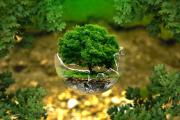Landscape, Irrigation, and Outdoor Water Use
For many water utilities, outdoor water use is the largest single end use of water within their service area, and thus provides the greatest opportunity to achieve customer water savings, both residential and commercial. In the past decade, many advances have been made in irrigation efficiency, using new technology to better manage outdoor water use.
Irrigation equipment includes everything from hoses and impact rotor sprinklers to valves, pipes, controllers, and drip emitters. Irrigation equipment such as sprinkler heads and smart controllers can also be found in the Fixtures, Appliances and Equipment section of the Resource Library.
Researching the effectiveness of outdoor water efficiency measures is a priority for AWE. In 2015, AWE launched its Outdoor Water Savings Research Initiative to identify and clarify what programs, practices, and irrigation technologies can support effective utility-driven outdoor efficiency programs. The first phase of the initiative was an analysis of published research on outdoor programs to guide future research towards areas of greatest need. In 2017, AWE released the Peak Day Water Demand Management Study, a study conducted to determine whether targeted shutoff of remotely-controlled irrigation systems could successfully reduce utility peak demand. In early 2019, AWE released the study Landscape Transformation: Assessment of Water Utility Programs and Market Readiness Evaluation. This two-year study addressed literature gaps identified in the first phase of the initiative, including reasons and rationale for customer landscape choices, cost-effectiveness and cost savings of various outdoor water savings programs, and persistence of outdoor water savings. Following this publication, AWE released Sustainable Landscapes: A Utility Program Guide, which draws upon results and conclusions from the landscape transformation study to provide actionable information for water utilities beginning or enhancing outdoor efficiency programs. As our communities experience cycles of drought related to climate change, saving water outdoors must be a priority for water utilities and water customers alike.





